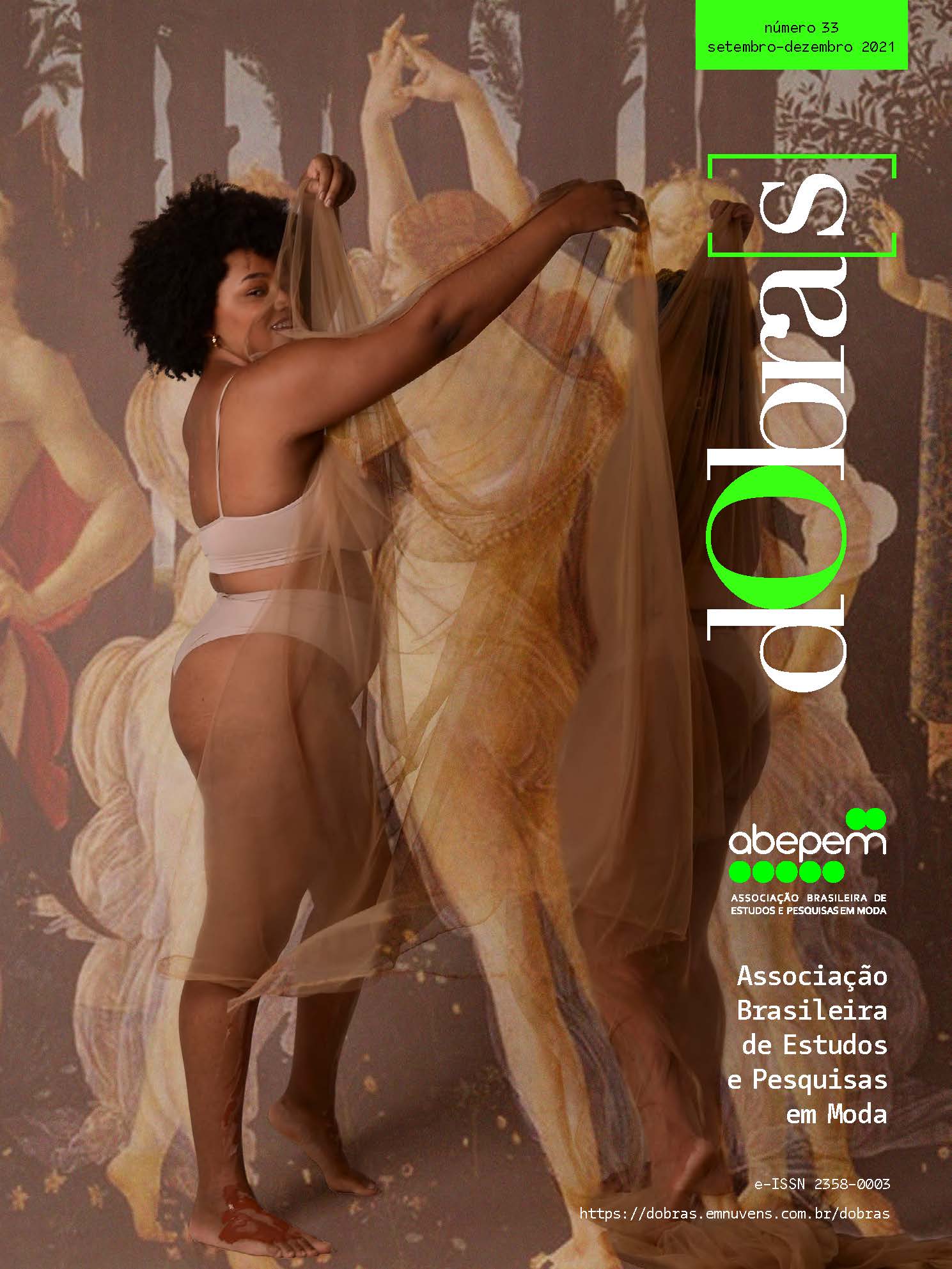Renaissance lace as an expression of fashion and culture for social inclusion in the Brazilian northeast
DOI:
https://doi.org/10.26563/dobras.i33.1439Keywords:
Teaching-learning process, Renaissance lace, Socioeconomic inclusionAbstract
This paper presents the socio-historical path of renaissance lace and its economic- cultural relevance for social inclusion in the city of Poção -PE, in northeastern Brazil. The process of teaching-learning and elaboration of renaissance lace, the exclusivity of work and the social role it plays in local development and socioeconomic empowerment of lacemakers were discussed. The research was bibliographical and exploratory. The renaissance strengthens social integration and public policies in favor of social organization and management processes, as well as the productive and commercial inclusion of lacemakers. Recognizing the role of renaissance lace as a generator of income and the role of women as a promoter of this process is to recognize cultural identity and promote the strengthening of identity of local social participants in order to overcome poverty.
Downloads
References
ALBUQUERQUE, Else de F.; MENEZES, Marilda. O valor material e simbólico da renda renascença. Revista de Estudos feministas [online]. 2007, vol.15, n.2, pp. 461- 467. ISSN 0104-026X. Disponível em: http://www.scielo.br/pdf/ref/v15n2/a13v15n2.pdf . Acesso em 10 out. 2016.
ALMEIDA, Maria da Conceição de; CARVALHO, Edgard de Assis; CASTRO, Gustavo de. Ensaios de complexidade. Porto Alegre: Sulina, 1984.
BRIEUVRE, M. A renda: história da renda em diversas ephocas e differentes paizes. Rio de Janeiro: H. Garnier, [190-].
CATELLANI, Regina Maria. Moda ilustrada de A a Z. Barueri: Manoele. 2003.
FERREIRA, Aurélio Buarque de Holanda. Novo Aurélio Século XXI: o dicionário da língua portuguesa. 1999.
FRANCO, Tereza. Renascença – PE.Catalógo. Cel Editoral. 2016.
GIRÃO, V.C. Renda de bilros. Fortaleza: Edições UFC, 1984.
IBGE. 2010. Disponívelem: http://cidades.ibge.gov.br/painel/economia.php?codmun=261120 . Acesso em: 23 set 2016.
IPHAN – Instituto do Patrimõnio Histórico e Artístico Nacional. Modo de fazer renda Irlandesa, tendo como referência o ofício em Divina Pastora. Brasília: Iphan, 2014. 168p. (Dossiê Iphan; 13).
______. Bens registrados: modo de fazer renda irlandesa, tendo como referência este ofício em Divina Pastora/SE [online]. Disponível no link: http://www.iphan.gov.br/bcrE/pages/ conAcoesApoiFomentoE.jsf# . Acesso em 29 jul. 2021.
JACKSON, F. N. A history of a hand-made lace: dealing with the origin of lace, the growht of the great lace centres, the mode of manufacture, the methods of distinguishing and the care of various kinds of lace (1900). London: L. U. Gill; New York: C. Scribner’s Sons, 1861.
LEITE, Rogério Proença. Modos de vida e produção artesanal: entre presenrvar e consumir. In: Olhares itinerantes: reflexões sobre o artesanato e consumo da tradição. Cadernos Artesol 1. São Paulo: Central Artesol, 2003.
MEAD, Margaret. O conflito de gerações. Lisboa: Publicações Dom Quixote, 1970.
NERY, Salete. O Comércio do Autêncitoco: produção, circulação e consumo de bens artesanais no contexto capitalista da atulaidade. In: Encontro Anual da Associação Nacional de Pós- Graduação e Pesquisa em Ciências Sociais, 33, 2009, Caxambu, MG. Anais. Caxambu: ANPOCS, 2009.
NÓBREGA, C. Renda renascença: Uma memória de ofício paraibana. João Pessoa: SEBRAE, 2005. PALISSER, B. A history of lace. London: Sampson, Low, Son, and Marston, 1869.
PRESTES, Fernanda. Exclusividade e a moda. 2010. Disponível em: https://rpnamoda. wordpress.com/2010/11/02/exclusividade-e-a-moda/. Acesso em: 14 set 2019.
QUEIROGA, L. Lagarta Richelieu. Recife: Lenice Queiroga de Sousa, 2013. RAMOS, L.;
RAMOS, A. A renda de bilros e sua aculturação no Brasil: nota preliminar e roteiro de pesquisa. Rio de Janeiro: Sociedade Brasileira de Antropologia e Etnologia, 1948.
SILVA, V.L.F Acervo de rendas Lucy Niemeyer: uma contribuição para o design. 2013. 173 p. Dissertação (Mestrado em Design) – Universidade Federal do Rio Grande do Sul, Porto Alegre, 2013.
TREPTOW,Doris. Inventando moda: planejamento de coleção. 4 ed. Brusque: D. Treptow, 2007.
WATT, Melinda. Textile Production in Europe: Printed, 1600–1800. In Heilbrunn Timeline of Art History. New York: The Metropolitan Museum of Art, 2000–. Disponível em: http://www. metmuseum.org/toah/hd/txt_p/hd_txt_p.htm . (October 2003). Acesso em 10 out 2016.
ZANELLA, Andrea Vieira; BALBINOT, Gabriela; PEREIRA, Renata Susan. A renda que enreda: analisando o processo de constituir-se rendeira. Revista Educação e Sociedade [online]. 2000, vol. 21, n.71, p. 235 - 252. ISSN 0101-7330. Disponível em: http://www.scielo.br/pdf/ es/v21n71/a11v2171.pdf . Acesso em 21 out. 2018.
Downloads
Published
How to Cite
Issue
Section
License

This work is licensed under a Creative Commons Attribution-NonCommercial-ShareAlike 4.0 International License.
The copyrights of the works published in this journal belong to the author, and dObra[s] holds the rights of first publication. Due to their publication in this open access journal, any work here is free to use, with its own attributions, in educational and non-commercial applications.










